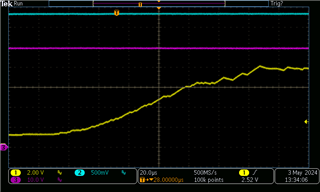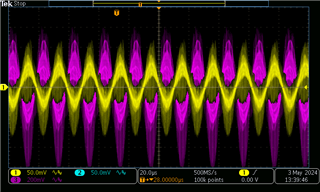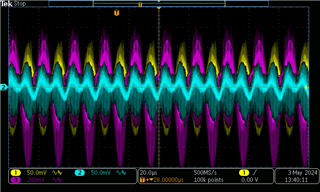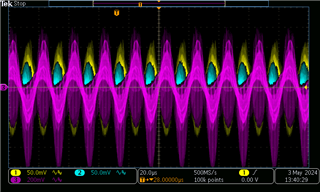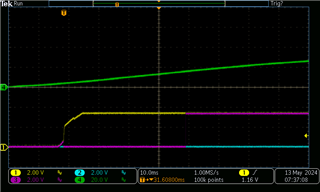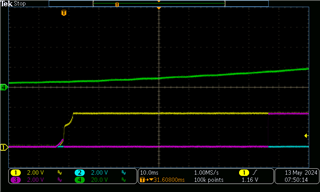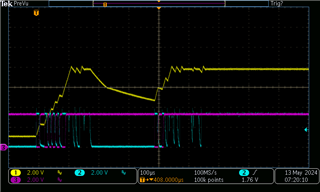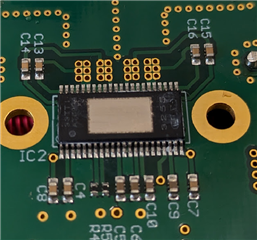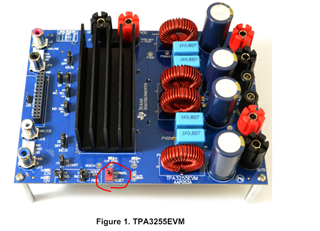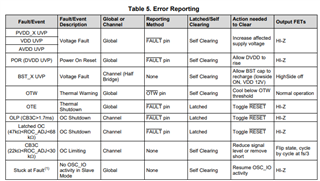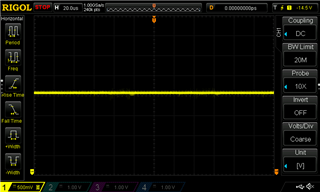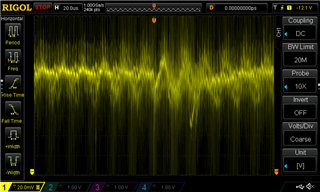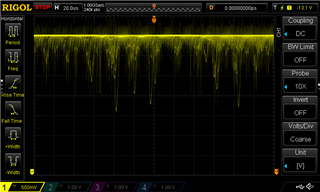Hi,
with the other thread being locked an missing some replies by me:
We still have the same issue.
Fault does (Very very briefly) appear on releasing RESET.
Bulk Power decoupling capacitors are Panasonic "VF 470/63 K-J16" - we've tried others
Channel 1: /RESET, Channel 2: /FAULT
Ref board:
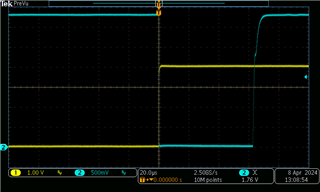
Our Board:
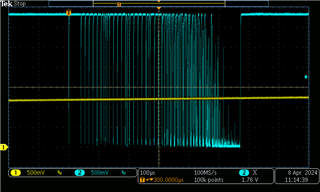
This does not occur again after startup.
If we run in the faulty state (amp delivering interrupted output) for a very long time we see extremely brief pulses on Fault:
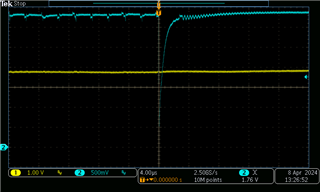
The amplifier never sets OTW, and does not stay in fault under any circumstances.
Greetings, Martin



